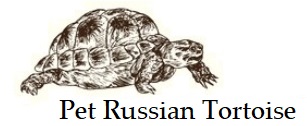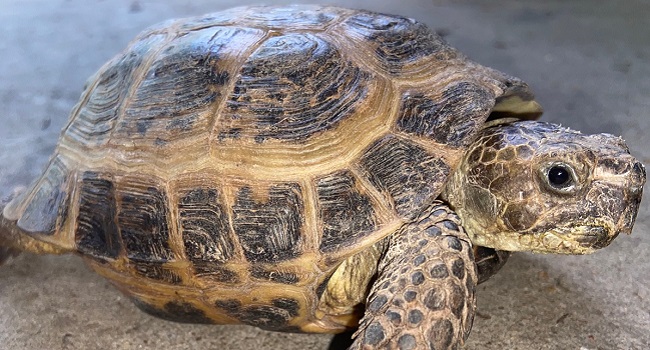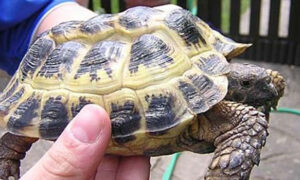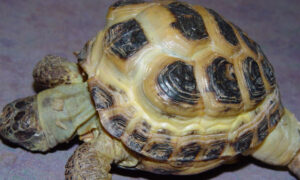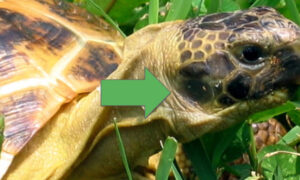For the most part, you don’t need to do too much to care for your Russian tortoise’s shell. The tortoise shell cares for itself, for the most part. However you will want to ensure that your tortoise has a healthy shell.
In the wild, Russian tortoises will soak in puddles of water, when available. They’ll find plenty of shrubs to rub themselves on to remove debris from the shell. A wild Russian tortoise will bathe a little differently than your pet Russian tortoise, however you still need to implement a good shell care routine for your tortoise.
Russian Tortoise Bath
You don’t need to fill the bathtub with warm water and bubbles. However, you do need to soak and clean a Russian tortoise at least one to two times a week
Fill a container with warm water enough to cover about 1/3rd to 1/2 of the shell. Let the tortoise soak for about 15-30 minutes. You may need to refresh the water as it may get dirty while cleaning your tortoise.
Your tortoise will drink the water and likely poop, but a good soak gives you the perfect timing to clean off the tortoise shell. Regular soaks help reduce bacteria on the shell and skin. A bath will help remove dirt and dead cells to keep the shell and skin strong.
Use a toothbrush with a soft bristle to gently rub your tortoise’s shell. Rub in-between the scutes on both the plastron and carapace.
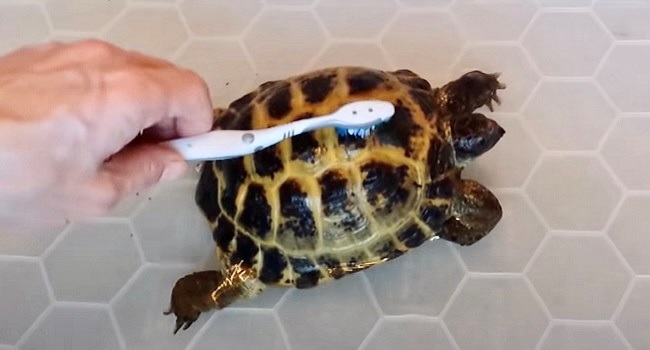
Also rub the legs, feet, tail and neck to wash off the dirt that may be caked onto the skin.
Use a Q-tip to rub to soft skin around the inner shell – front and back sides of the tortoise.
Do not use any detergent or soap. Don’t even use baby soap. All you need is warm water to clean a Russian tortoise.
Should I Oil My Russian Tortoise’s Shell?
No. You should not use coconut oil, olive oil or even baby oil on your tortoise’s shell. There is no scientific evidence that shows oiling a tortoise’s shell will moisturize the shell, keep the shell healthy, fight fungus or make the shell stronger.
Oiling the shell should not be a part of your tortoise shell care routine. Oiling is not a solution for cleaning, polishing, moisturizing or treating a tortoise shell.
The tortoise shell (both plastron and carapace) are made of living tissue that needs oxygen and exposure to UV rays. If you oil the shell regularly, the buildup can be harmful to the tortoise. The shell is made of keratin and bony layers that contain millions of pores and the oils can clog the pores.
Applying oil to the shell, even in a thin layer, can trap dirt between the shell and the oil. The trapped dirt can actually clog the pores on the shell, causing bacterial or fungal growth, which can lead to shell rot.
If you oil your Russian tortoise and put it outside or in an indoor habitat before the oil has completely dried, the oil will attract dirt, which can build up on the shell, dry on the shell and potentially cause the tortoise to overheat.
And, lastly, applying oil to a Russian tortoise can actually inhibit the absorption of UVB.
